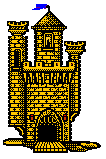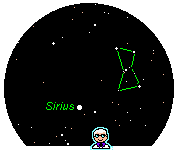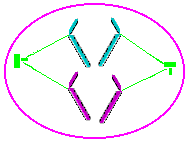 |
Merlin Science
offering self-paced science courses
specially created for self-learning
FREE!!
| 
|
Merlin Science was created by Dr Jamie Love in 1996 and its courses are a huge success among home schoolers, hobbyists, high schools students, teachers and even doctors! Each course is a "hypertextbook" - a series of webpages read using a web browser. They include computer-graded exams and use a variety of "hypertext-tricks" to make the teaching effective. These courses (hypertextbooks) have been "beta tested" by hundreds of students and their feedback used to make each course a successful and enjoyable learning experience.
You can learn more about hypertextbooks, how the exams work and other details at Merlin's Frequently Asked Questions page or you can scroll down and be introduced to each course with its own FAQs. You might also be interested in reading how Merlin created his first course, Principles of Alchemy (Chemistry).
Merlin Science currently offers three courses - each targeted to a differed level of education, so you are sure to find something that meets your needs and satisfies your curiosity.
|
Principles of Alchemy (Chemistry)
covers more than half the material taught in university-level freshman chemistry BUT it is taught in such a way that
an average 13 year old could learn from it and enjoy it. It is specifically designed as a "low-math" course to teach as much chemistry as possible without resorting to logarithms, algebra or complex equations. However, this is NOT a watered down version of the science. These are serious science lessons.
|  |
 |
Each chapter, called an "Ancient Element", contains lectures
presented in dialogue style. Like reading a script, the student "listens
in" on the conversation between Merlin and his student, Arthur.
The back and forth nature of dialogue means concepts can be explained
in a natural manner. It also makes the lessons interesting and easy to read.
Lectures conclude with Arthur's Notes - a compilation of the salient features discussed
in the dialogue.
Then the student is challenged with Merlin's questions which hyperlink to detailed answers. Some of these Q's & A's encourage the student to recall important concepts discussed in the lectures and notes. However, most Q's & A's are designed to challenge the student to learn more! They take over where the dialogue ends, introducing more advanced ideas and drawing the student further into the subject. Merlin's Q's & A's are not self-assessment; they are (more) self-learning.
There are even some simple home experiments to try.
|
Each Ancient Element ends with a computer-graded exam. After completing all four sections the student takes the final exam and, once successfully completed, will receive a Diploma! In total there are 5 exams with 100 questions.
Learn more about Principles of Alchemy (Chemistry)!
|
 |
Principles of Astronomy uses 48 lessons to teach a healthy mix of both observational astronomy and academic astronomy.
Jamie tries to teach the identification along with the concepts and to do that he has chosen specific topics to coincide with things you can actually observe (most of the time). Students will learn how to identify the bright stars and obvious constellations as seen from the Northern Hemisphere. [There's also a lesson about the night sky as seen from the South Pole.] More importantly, students will gain an understanding of astronomy to the level expected of a first-semester, university-level astronomy course, but light on the math.
|
In addition to the hypertextbook, students are directed to websites where further, often more advanced, information can be found. Also, students are told where to get free astronomy software that complements what is taught in the hypertextbook. These ancillary websites and programs are not required for the course but it would be a shame not to point them out to the curious student. By the way, you don't need a telescope but access to binoculars would be a good idea.
Each lesson comes with a Study Guide to help the student plan and organize his or her thoughts. The student can complete a glossary to keep track of the 425 terms and phrases taught in this course. An alphabetical list of the more than 300 astronomy objects (mostly stars and constellations) encourages the student to keep a list of objects seen.
Each Quarter (12 lessons) ends with two computer-graded exams. One tests the student's understanding of the academic astronomy and the other examines the student's ability to identify stars, constellations and other objects. In total there are 8 exams with 160 questions.
Learn more about Principles of Astronomy!
|
|
Principles of Genetics is actually five courses in one!
The first three courses, Cytogenetics, Mendelian Genetics and Advanced Genetics, are the equivalent of a university-level Freshman course in Genetics. All lessons come with a Student's Study Guide for the student to print and fill in as s/he studies and a Teacher's Guide with the blanks filled. Four workshops guide the student through the most difficult sections providing additional practice for the math and puzzle solving. A total of 96 Self-Assessment Questions and Answers (SAQ&As) reinforce what is taught and each course concludes with an exam - totaling 60 multiple choice questions. |

|
 |
The fourth course, Molecular Genetics, is similar to a Sophomore university level course and focuses on the chemistry of Genetics, thus providing the student with a solid education in the most exciting areas of biotechnology! Again, all lesson come with Study Guides and SAQ&As (74 of them). This single course is much longer than any one of the three "Freshman" courses so the lessons are broken up into sublessons, providing opportunities for breaks and reflection on what is taught. Molecular Genetics concludes with an exam of 20 multiple choice questions.
|
The last course is Medical Genetics and is adapted from the lecture notes that Dr Love used to prepare his medical students. Obviously, this is very "advanced stuff" and presented in a much "denser" manner. This last course provides students with an opportunity to review what they have learned, add more topics (such as Gene Mapping and Molecular Techniques) and learn how genetics is applied. The exam, composed of 20 multiple choice questions, gives students a taste of what they might expect in Medical School.
Although not required, students are encouraged to visit websites for more detailed and advanced information. The "point" of Principles of Genetics is that the student can progress as far as s/he wishes.
Learn more about Principles of Genetics!
|
| 
|







